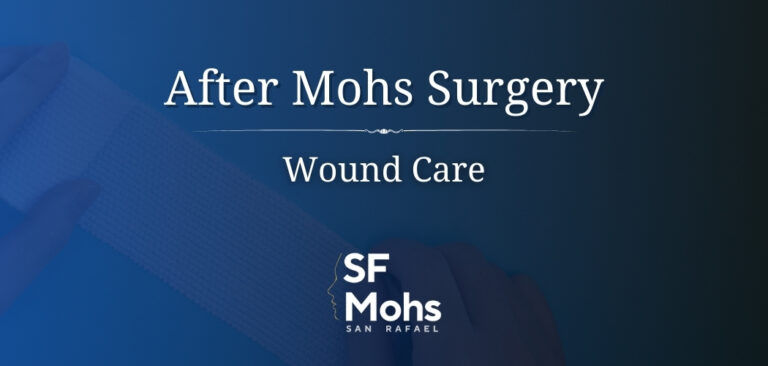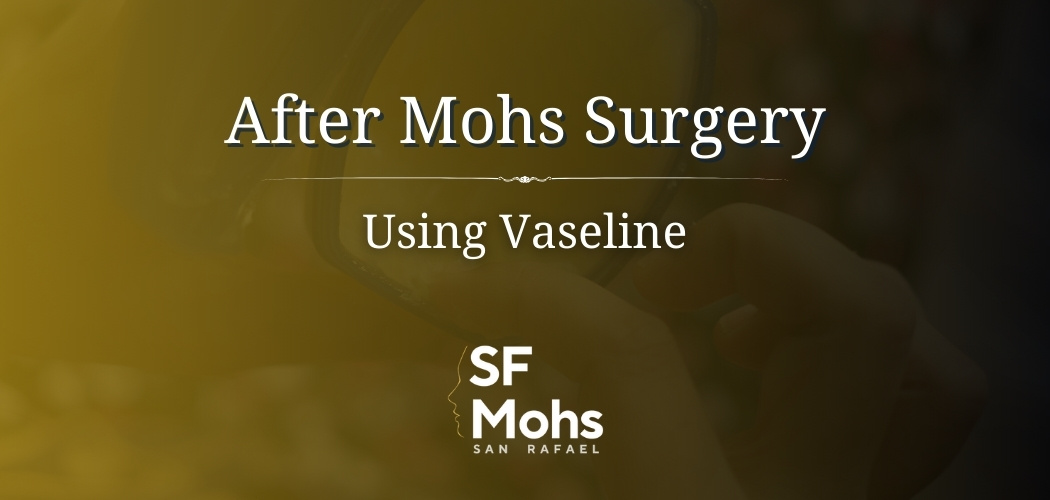
You’ve been told to use Vaseline regularly on your wound after you had Mohs surgery. However, you might not be sure of:
- Why it’s such an important part of the healing process
- How frequently to use it
- How long to apply petroleum jelly to the wound
Let’s look at how long to use Vaseline after Mohs surgery and why it’s used.
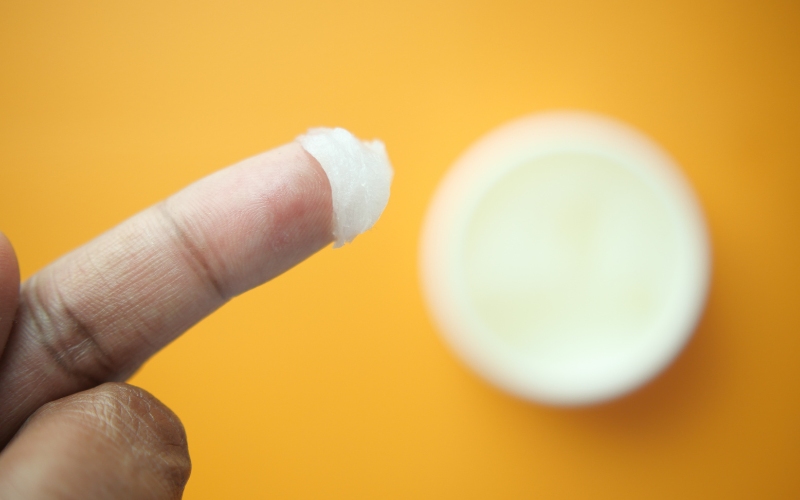
How Long Should You Use Vaseline After Mohs Surgery?
You’ll generally use Vaseline for at least three weeks after your Mohs surgery.
This includes the use of petroleum jelly for the entire time during which you have sutures. Once sutures are removed, you should still continue to use the Vaseline for at least another week. Some people prefer to use it even longer, depending on the recovery of the wound.
How to Apply Vaseline to Your Wound
As well as understanding how long should you use Vaseline after Mohs surgery, you also need to know the right frequency to apply it to best help your wound care.
This depends on whether you’re wearing bandages to help cover up the wound. You also have to consider whether your dermatologist used sutures or not, as there are some cases where small wounds don’t need them.
Vaseline helps prevent the wound from drying out. When the wound becomes dry, it creates scabs, and that delays the healing process.
If you’re not wearing a bandage anymore, apply Vaseline more frequently – up to five to 10 times a day.
However, when you are still wearing a dressing and a bandage on the wound, you’ll apply Vaseline once a day when you clean the wound.
Book a Consultation With Dr. Ravinder Gogia, MD
San Rafael’s Leading Mohs Surgeon
Dr. Gogia is a board-certified Dermatologist and specialist in Mohs Surgery.
We serve areas including:
We can help if you:
When to Stop Applying Vaseline
You may think you can stop using Vaseline once the sutures are removed. However, it’s important to remember that once the sutures are removed, the wound is still healing.
You should actually only stop applying Vaseline once the wound has completely healed.
If you prefer more time-specific instructions, continue to use the petroleum jelly for at least one week after Dr. Gogia confirms that you no longer have to wear a bandage over the wound.
Why Does Vaseline® Help?
Vaseline was first discovered in 1859 by Robert Augustus Chesebrough. He noticed that some of his workers used this “formula” to help their wounds heal – and soon after started to market it as Vaseline. The formula remains pretty much the same.
Waxes and mineral oils are used to form petroleum jelly – including the ingredient petroleum. This ingredient is known to help create a seal on the skin. It’s a water barrier that makes sure your skin can retain moisture, rather than losing it through evaporation.
After Mohs surgery, you need to avoid drying out the wound. If your wound dries, it will form scabs, and healing will take longer.
By keeping the wound moist, scabbing won’t happen, and you’ll be promoting the healing process. The barrier that Vaseline creates also keeps dirt and germs out of your wound.
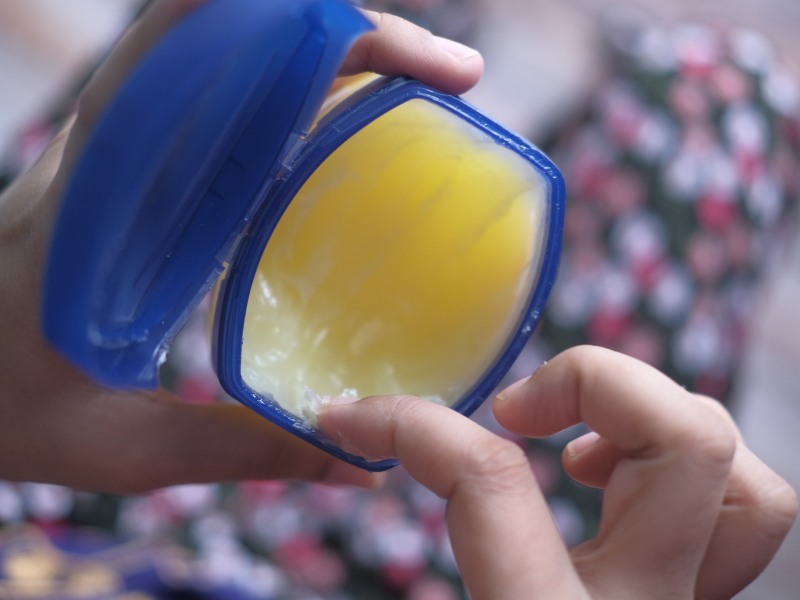
How to Apply Vaseline®
Applying Vaseline to your wound is easy and simple. However, there are a couple of steps that you should follow.
First of all, it’s a good idea to use a new container of Vaseline when you are going to treat your wound. Bacteria can easily spread – and if you use an old jar of Vaseline, it could contain some bacteria that you will now possibly introduce to the wound.
Here are the steps to apply Vaseline:
Make sure you follow proper cleaning techniques for the wound. You want the wound to be clean when applying petroleum jelly. If there are bacteria and other germs in the wound, petroleum jelly will trap them, increasing the risk of infection.
Vaseline® vs. Antibiotic Ointment
Some people are confused about whether to apply Vaseline vs an antibiotic ointment.
In most cases, you should use Vaseline. Studies show that petroleum jelly offers similar benefits to antibiotic ointment when it comes to wound healing. We’d rather use the least-invasive treatment, to prevent possible complications such as allergy to antibiotics.
There are some situations where you’ll need to use an antibiotic ointment, however. If you find that your wound develops signs of an infection, get in touch with Dr. Gogia. He’ll be able to confirm if there is an infection and advise you on treatment.
To help treat an infection on your skin (known as cellulitis), you’ll usually use an antibiotic ointment. This will kill the bacteria causing the infection, thus promoting healing of the wound.
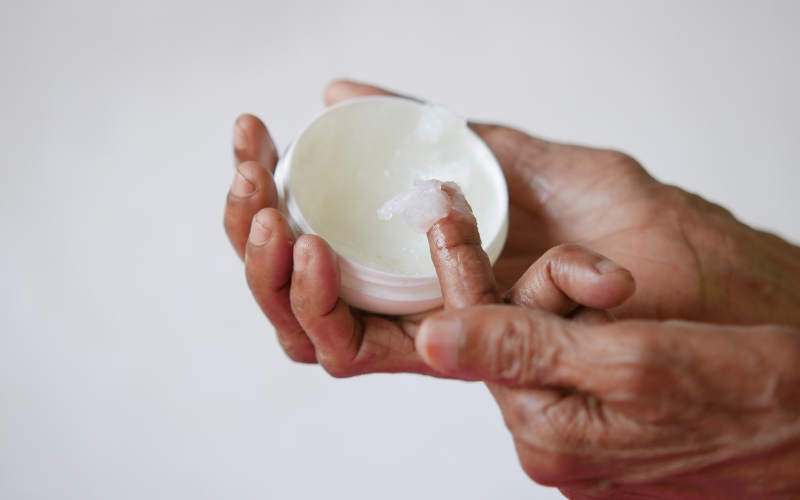
Alternatives to Vaseline®
It’s usually not a problem if you can’t find Vaseline specifically, as there are generic brands of petroleum jelly that offer the same benefits. However, if you don’t want to use Vaseline, then it’s important to understand what alternatives there are.
Remember that the main purpose of Vaseline is to keep the wound moist – and that’s something that helps to speed up healing and prevent infections. There have been cases of allergic contact dermatitis due to petrolatum (petroleum jelly). This could be one of the reasons you want to avoid Vaseline.
Some people may use Aquaphor® as an alternative to petroleum jelly. It’s a thick ointment that also helps create a barrier on your skin and keeps the wound moist to prevent scabs.
Polysporin® is another option that’s sometimes recommended, but you should check with Dr. Gogia if it’s a good idea. He may advise you to use this kind of ointment if there are signs of an infection in the wound.
Conclusion
Petroleum jelly is an incredibly helpful solution when it comes to wound healing, but many people don’t know how long to use Vaseline after Mohs surgery.
Vaseline helps to prevent your wound from drying out and contributes to the healing process. It’s important to ensure you use it regularly, even when your sutures are removed, and you no longer wear a bandage.

